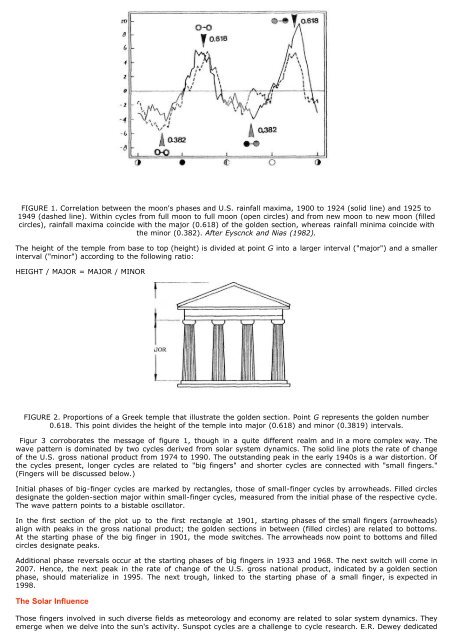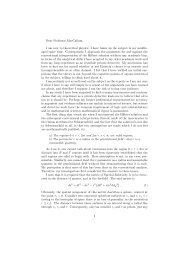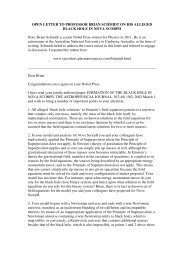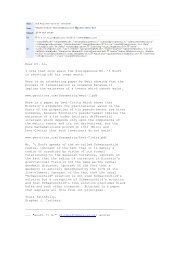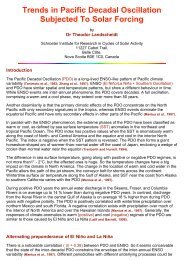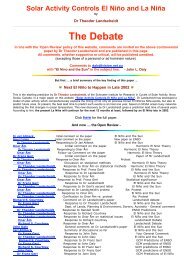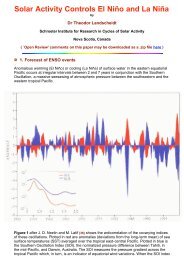THEODOR LANDSCHEIDT - The Golden Section - PlasmaResources
THEODOR LANDSCHEIDT - The Golden Section - PlasmaResources
THEODOR LANDSCHEIDT - The Golden Section - PlasmaResources
You also want an ePaper? Increase the reach of your titles
YUMPU automatically turns print PDFs into web optimized ePapers that Google loves.
FIGURE 1. Correlation between the moon's phases and U.S. rainfall maxima, 1900 to 1924 (solid line) and 1925 to<br />
1949 (dashed line). Within cycles from full moon to full moon (open circles) and from new moon to new moon (filled<br />
circles), rainfall maxima coincide with the major (0.618) of the golden section, whereas rainfall minima coincide with<br />
the minor (0.382). After Eyscnck and Nias (1982).<br />
<strong>The</strong> height of the temple from base to top (height) is divided at point G into a larger interval ("major") and a smaller<br />
interval ("minor") according to the following ratio:<br />
HEIGHT / MAJOR = MAJOR / MINOR<br />
FIGURE 2. Proportions of a Greek temple that illustrate the golden section. Point G represents the golden number<br />
0.618. This point divides the height of the temple into major (0.618) and minor (0.3819) intervals.<br />
Figur 3 corroborates the message of figure 1, though in a quite different realm and in a more complex way. <strong>The</strong><br />
wave pattern is dominated by two cycles derived from solar system dynamics. <strong>The</strong> solid line plots the rate of change<br />
of the U.S. gross national product from 1974 to 1990. <strong>The</strong> outstanding peak in the early 1940s is a war distortion. Of<br />
the cycles present, longer cycles are related to "big fingers" and shorter cycles are connected with "small fingers."<br />
(Fingers will be discussed below.)<br />
Initial phases of big-finger cycles are marked by rectangles, those of small-finger cycles by arrowheads. Filled circles<br />
designate the golden-section major within small-finger cycles, measured from the initial phase of the respective cycle.<br />
<strong>The</strong> wave pattern points to a bistable oscillator.<br />
In the first section of the plot up to the first rectangle at 1901, starting phases of the small fingers (arrowheads)<br />
align with peaks in the gross national product; the golden sections in between (filled circles) are related to bottoms.<br />
At the starting phase of the big finger in 1901, the mode switches. <strong>The</strong> arrowheads now point to bottoms and filled<br />
circles designate peaks.<br />
Additional phase reversals occur at the starting phases of big fingers in 1933 and 1968. <strong>The</strong> next switch will come in<br />
2007. Hence, the next peak in the rate of change of the U.S. gross national product, indicated by a golden section<br />
phase, should materialize in 1995. <strong>The</strong> next trough, linked to the starting phase of a small finger, is expected in<br />
1998.<br />
<strong>The</strong> Solar Influence<br />
Those fingers involved in such diverse fields as meteorology and economy are related to solar system dynamics. <strong>The</strong>y<br />
emerge when we delve into the sun's activity. Sunspot cycles are a challenge to cycle research. E.R. Dewey dedicated


